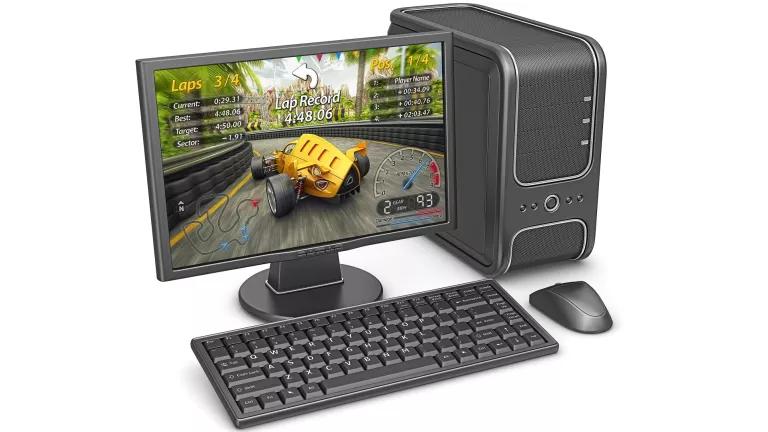
Cutting computer energy waste, particularly when desktops and laptops are doing little or no work, could save consumers billions of dollars on their energy bills and avoid millions of tons of carbon pollution annually, according to a new report released today by the Natural Resources Defense Council.
To prove the point, NRDC and its partners conducted a demonstration project that cut the “idle power” of a desktop computer in half, using readily available off-the-shelf components and tweaking system power management settings, with zero impact on performance or the price tag (while reducing electricity bills by more than $70 over the life of the computer).
Idle power matters because modern computers spend most of their time, and energy use, when on, but not actively used such as when users are away from their desks, or when they are performing light tasks like browsing the Internet or reading email—both of which require little processing power. Computers spend from 50 percent to 77 percent of their time in idle and low-intensity active modes and draw much more power than necessary in them.
If all computers achieved a 30 percent average energy reduction, U.S. consumers could save $3 billion a year, reduce electricity use by 29 billion kilowatt-hours annually—equal to the power consumed by all the households in the cities of Los Angeles and Chicago combined—and keep 20 million metric tons of climate-disrupting carbon pollution out of the atmosphere, all with zero impact on computer performance or user convenience.
Those are among the findings of our new NRDC issue brief, “Slashing Energy Use in Computers and Monitors While Protecting Our Wallets, Health and Planet.”

Currently, more than 60 types of products are subject to federal energy efficiency standards, ranging from light bulbs to TVs and a whole lot in between—but not for computers or monitors. The U.S. Department of Energy even recently set efficiency standards for those little black boxes on the power cords that connect many of our electronics, including computer laptops—to wall outlets. Federal standards implemented since 1987 saved U.S. consumers $63 billion on their utility bills in 2015 alone and helped avoid 2.6 billion tons of carbon pollution—equivalent to the emissions from nearly 543 million cars—while making U.S. businesses more competitive, driving innovation and creating jobs.
So why not computers? After all, the nation’s 300 million computers in our homes and businesses represent one of the largest energy users in the electronics category. U.S. computer and monitor electricity consumption in U.S. homes and businesses is estimated to total 95 billion kilowatt-hours annually; more than the electricity use of all the households in California, and costs consumers $10 billion a year.
A typical desktop consumes substantial amounts of electricity when on but not actively used—almost four times as much power as a typical laptop (a.k.a. notebook) and 40 times as much as a tablet!

Yet, manufacturers could cut idle power draw by half using readily available off-the-shelf technology, as demonstrated by our prototype desktop computer. Standards are needed to make sure that kind of smarter energy use happens so consumers aren’t left paying higher than necessary energy bills
Today’s power-saving opportunities
Energy efficiency standards are performance-based; they set minimum efficiency levels and let manufacturers choose the most cost-effective strategies to achieve them. But our report shows that power-saving opportunities already abound, such as fully utilizing the CPU’s (central processing unit) capability to lower its power when not doing any work (surprisingly, most desktop computers are not optimized to do that), configuring the motherboard to power off ports and fans when not needed (a 10-cent per computer investment would yield significant energy savings), using efficient disk drives, and optimizing the power supply to be more efficient when the computer is idle or in low-intensity use, to name just a few.

The California Energy Commission (CEC) and the U.S. Department of Energy (DOE) are separately developing the first mandatory standards for computers in the United States. DOE standards take longer to develop and go into effect, typically seven to eight years. While federal standards will ultimately preempt California’s, by going first the Golden State is acting as a policy laboratory for the nation and is developing the foundation for future federal standards. In addition, because California is home to one in eight U.S. consumers, manufacturers are unlikely to maintain separate inventories in order to be able to sell their products in California, which means if the state sets standards first—which it seems poised to do—it still is likely to have a national and international impact.
While the CEC is developing the nation’s first energy efficiency standards for computers, California Delivers, a broad coalition of consumer, low-income households, businesses, schools, and environmental groups,is calling for CEC to act quickly and decisively to reduce the computer and monitor energy waste highlighted in the NRDC report, save consumers money, and reduce pollution.
What you can do now
Until the government and manufacturers act, computer users can take action on their own to reduce the energy waste from their machines, including buying an ENERGY STAR® computer (the label signifies some of the more efficient models on the market) and purchasing a more efficient laptop in lieu of a desktop. While at your computer, close unused windows and browser tabs, avoid energy-wasting screen savers, power down the machine when not in use, and adjust the settings so it will automatically power down to sleep or off mode after 30 minutes or less of inactivity in case you forget to do it manually.
Look around your home at all of the products using less energy and saving you money because of efficiency standards: ceiling fans, central air conditioners, clothes washers and dryers, dishwashers, ovens, refrigerators, televisions and more. It’s time to add computers and monitors to the list.



